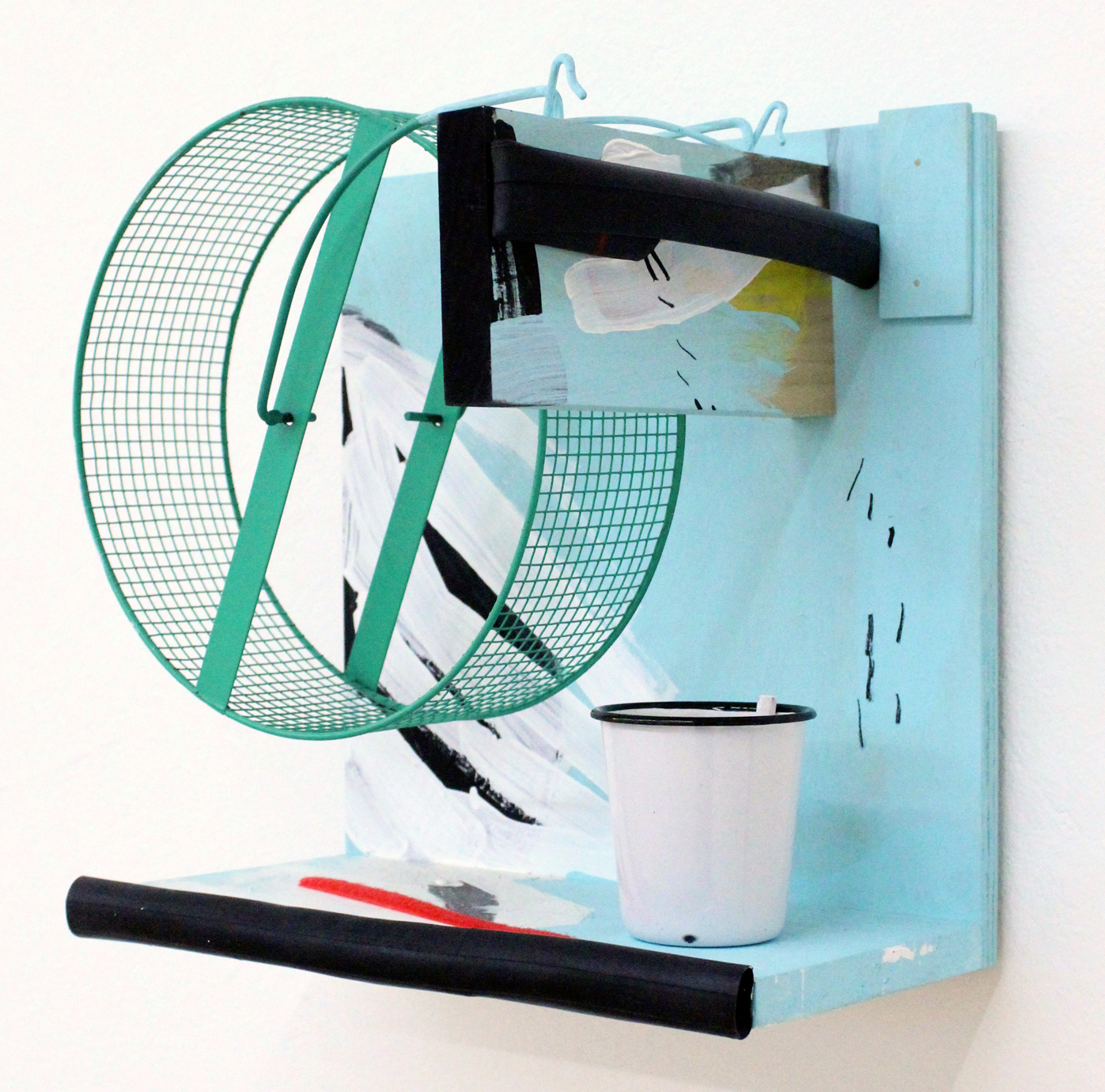








Royal NoneSuch Gallery presents Kat Geng: Lost in the Found, a solo exhibition of sculptural work by Bay Area based artist, Kat Geng. With an almost religious devotion to familiar household objects, Geng’s works are deceptively simple. In her sculpture, The Unsolved Case of the Vertig-oh no’s (2017), she employs shoelaces, ribbon, a plastic mug, and other found objects to evoke the destabilizing experience of facing an ongoing misdiagnosed illness. The wildly imaginative sculptures on view in Lost in the Found transport viewers into Geng’s strange and curious world, one that is both playful and menacing, deeply personal and universal.
Akin to previous generations of artists working in assemblage (from Robert Rauschenberg to Jay DeFeo), Geng combines scavenged objects, which she often finds on the street. Decontextualizing familiar items such as phones, rubber gloves, and umbrellas, Geng transforms them into uncanny manifestations of memories and fears rooted deep in the subconscious. With a profound openness to materials, the satisfying chaos of Geng’s compositions demonstrates her democratic approach to the material world she inhabits.
Lost in the Found, Geng’s second solo show in the Bay Area, showcases her ongoing interest in how we assign emotional authority to objects and spaces–a familiar chair can calm the nerves, or basement stairs can instill fear. In her sculpture Safety Coat, the artist covers a winter jacket in objects including a comb, a plastic banana, and a spoon, playfully digging into the human experience of fear and our sometimes-futile coping mechanisms. The items on the coat are not ones typically associated with safety, so by including them in her sculpture and titling it Safety Coat, Geng invites us to examine the relationships we construct between fear, danger, and safety.
Notes on video of If The Conditions Are Right, I Just Might:
This video documents the transformation of If The Conditions Are Right, I Just Might from one manifestation to another. Along with the sculpture, I created a set of instructions - given to the gallery sitters - detailing how to manually change the sculpture. I requested that these adjustments were made when specific conditions in the gallery were met. The conditions needed to be met were different in each gallery. In the first gallery this sculpture was shown the condition that prompted a change was when a child entered the gallery.